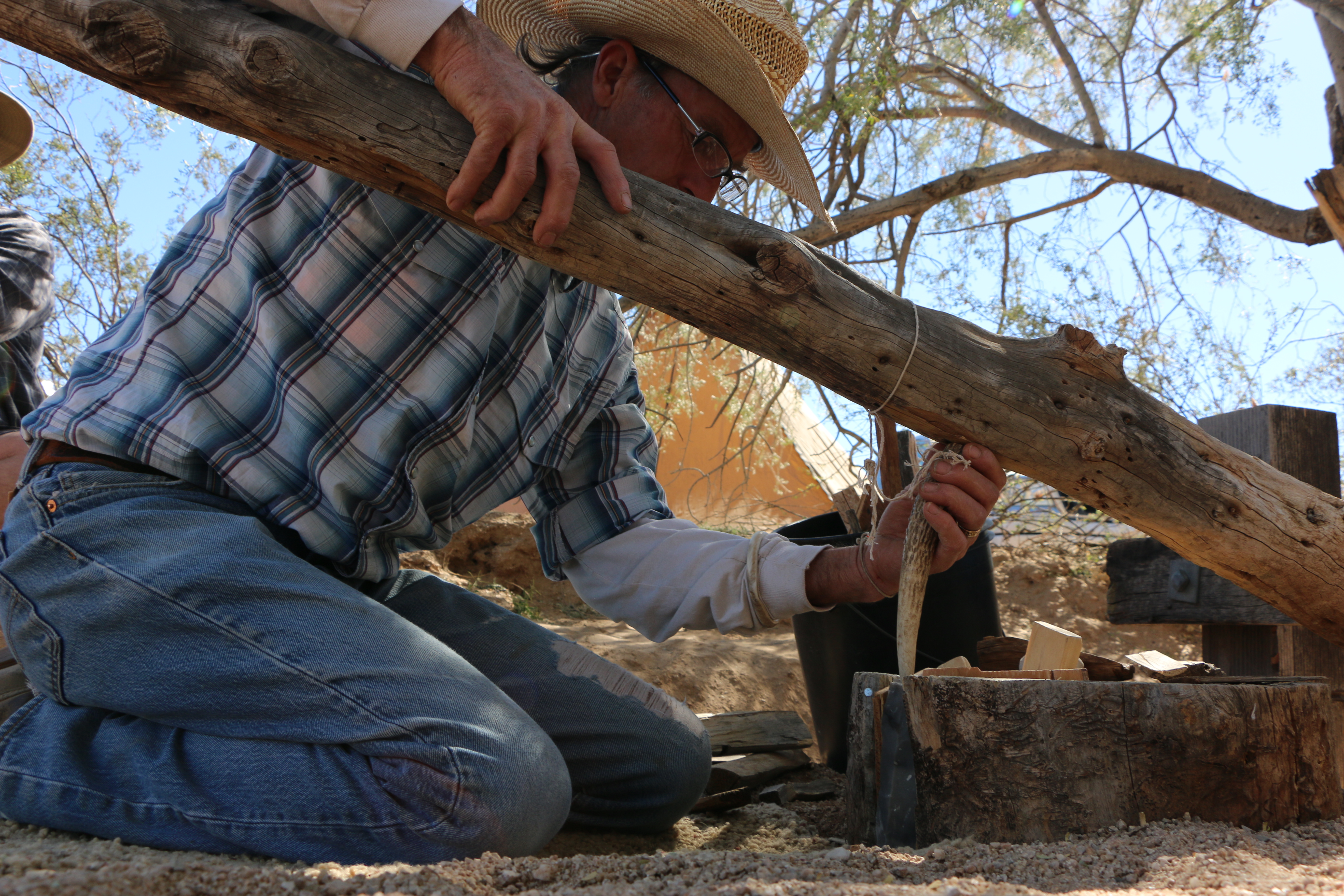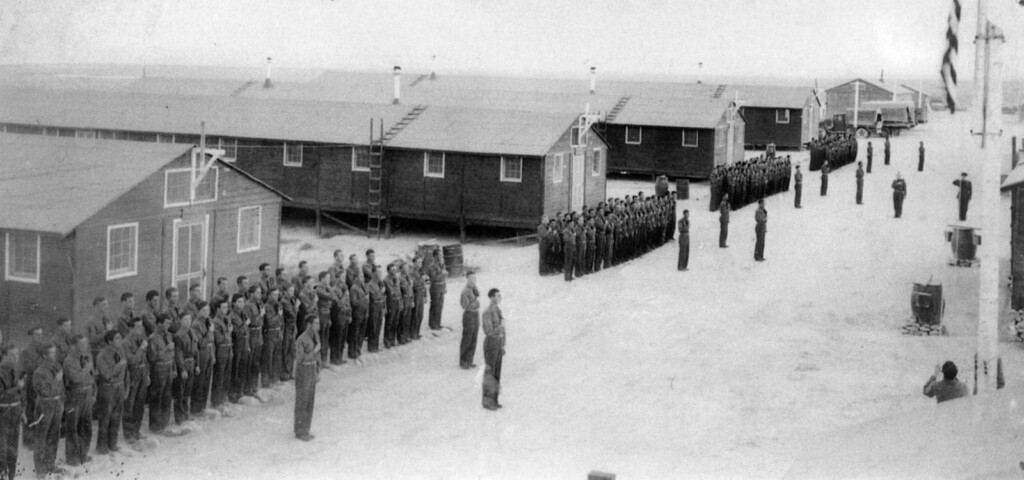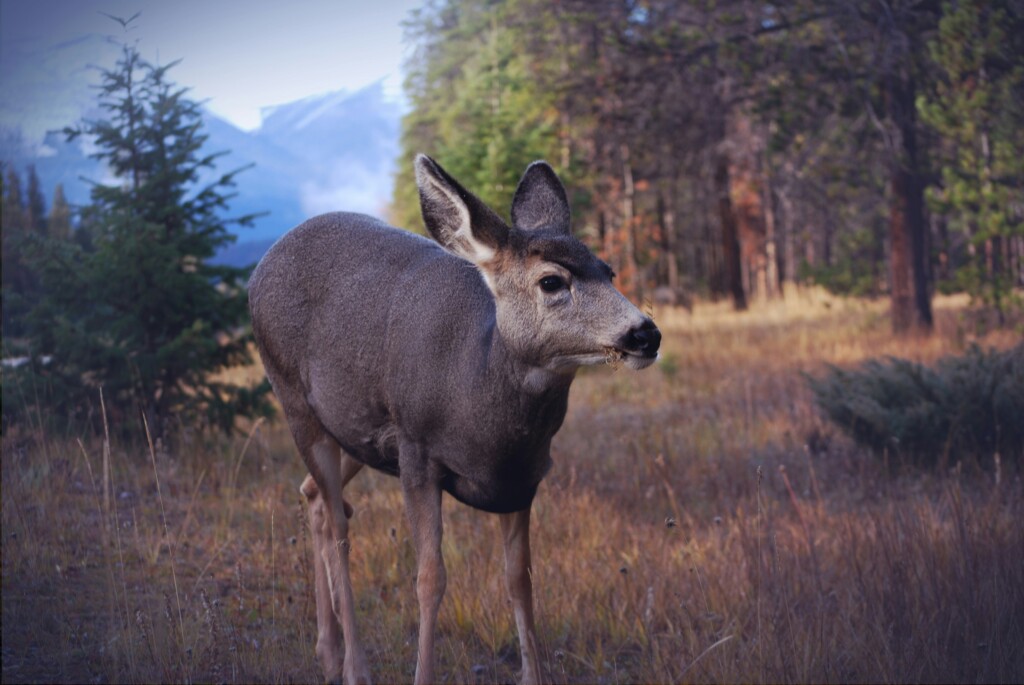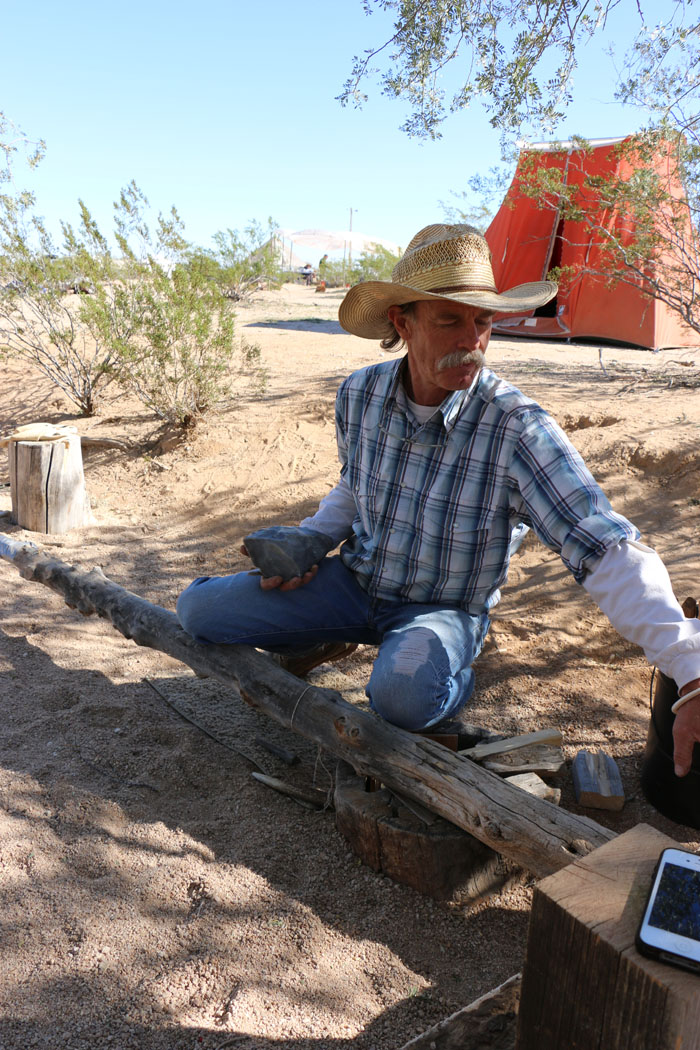
When I learned that the man I had been tracking down to write about for the last six months was going to be at a “primitive skills gathering” just outside of Phoenix, I considered my own lifestyle: I had dozens of “things to do” on a list, but why don’t I just up and leave town for a few days to do exactly what I want? He was doing exactly what he wanted to do, why couldn’t I? So I left to find Greg Nunn and write a story about him.
After my 13-hour drive, I arrived at the gathering called “Winter Count.” My hope was to not only talk to Nunn, but to get a better handle on this entire primitive skills movement, a national phenomenon made popular by the survival reality TV shows. Many of the reality TV stars are at this gathering, as well as all of the contestants from the hit Discovery TV show Alone. But I didn’t come to meet stars. I came to gain an understanding of the skilled artisans of ancient antiquities, people who take up a craft and a skillset, likely obsolete, knowing there isn’t a ready market for their products.
Winter Count and its sister gathering, Rabbitstick, are the longest-running of the original primitive skills gatherings. They were started around 35 years ago by primitive skills experts from Utah, Idaho and Arizona. This year’s Winter Count was completely sold out. These gatherings have become so popular that organizers need to turn away many of those who wish to attend. What is the cause of the rise of primitive? My hunch is that it’s because primitive skills offer exactly what is missing in modern life: the ability to work with hands, brain, muscles, and to be outside crafting things using natural materials—to live how humans did for 99.9% of our evolutionary existence on earth.
Primitive Living on the Rise
I arrive at camp to see yurts, canvas wickiups, teepees, artistic mini-house trailers. It looks like a hippie convention, but I don’t smell any marijuana. I attend morning announcements where a procession of mountain men and women stand and speak about what they are teaching. “Come to my class and learn brain tanning and buckskin processing. I’ll be over there past Dog Town.” “Learn how to make a leather case for your knife, engineered so the knife will never fall out.”
Around 15 instructors announce what they are teaching from pottery to basket weaving to brain tanning to flintknapping and blacksmithing, to processing animals (watch interviews of these people on UtahStories.com). I witness men dressed like Jim Bridger, with buckskin leather clothing; men with huge burly beards who look like they just stepped out of a cave from winter hibernation, but surprisingly, there are also families with small children and even infants. This isn’t a hippie-type festival at all. Everyone is lucid and here to share their knowledge and crafts. I learn that drugs and alcohol are not permitted.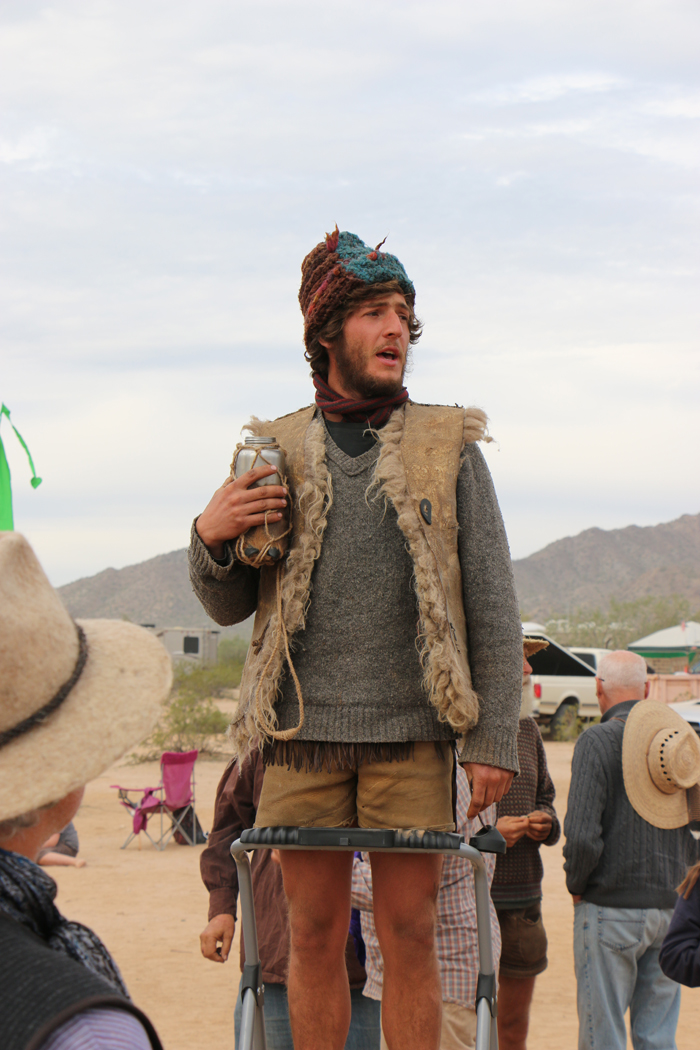
I interview Dave Wescott who is the event organizer. He is pleased that I would choose to come and write about a man who is so humble but has been a part of Winter Count from the beginning. Wescott teaches primitive skills at BYU Idaho. He leads me to Greg Nunn on the way through camp. Greg is a bit taken aback by my presence. “You drove all that way to find me?” He sound astonished.
“Yea, I’ve heard a lot about you and I figure I’d find you here in your element.”
“Okay, What do you want to know?” he asks politely.
Flintknapping is the art of crafting flint into sharp arrowheads, spearheads, daggers or skinning tools. Nunn says he became fascinated with the craft as a young boy, witnessing his father attempt to flintknap arrowheads. “He was attempting to use hot water, which someone told him was a technique, which was completely inaccurate.”
Nunn became intrigued by the ancient arts and especially the mystery of flintknapping. There were no modern tools which could recreate an Indian arrowhead as perfectly as the people in the Neolithic Era had crafted them. “I was fascinated by these Natural History books when I was a kid and in one of them I noticed that the drawing had a man holding what looked like a piece of antler. After changing his tool set, Nunn was able to surpass his father in the quality of the finished knapped stones.
Later, he decided he needed a clever way to ask a girl he had a crush to date him. “I thought if I just go up and ask her, she might say no, so I decided to make her a gift.” Nunn’s solution? To flintknap her an arrowhead. “It was the best piece I had ever made, and she still has it.”
Nunn has been married to that girl now for over 40 years. His gift set the stage for what Nunn would spend the next thirty years perfecting.
When Nunn was in his twenties, he met a man, Errett Callahan, who, like him, was on a quest to rediscover the ancient craft of flintknapping. Callahan already had 20 years of experience. Together they quickly progressed, making some of the most refined and skilled arrowheads and daggers produced in the modern era. Soon after, Nunn connected with more primitive skills experts and began attending Rabbitstick, and several years later, Winter Count.
Nunn’s refinement of his craft gained him international acclaim. Nunn’s work has been cited in doctoral dissertations. In 2005 he produced a 90-minute DVD which shows in detail how he uses dozens of tools and techniques developed over his 30-year career to craft an incredible dagger from Texas gypsum. Danish scholars have cited Nunn’s techniques, and Nunn has even traveled to Denmark to share his knowledge and techniques of how people in Neolithic Sweden and Denmark crafted their tools (which are priceless relics found in museums). Nunn can now craft nearly identical replicas, which amazed the scholars.
Nunn’s objective is to share his knowledge, which is why he is here at Winter Count. According to Nunn, “It isn’t knowledge unless you share.”
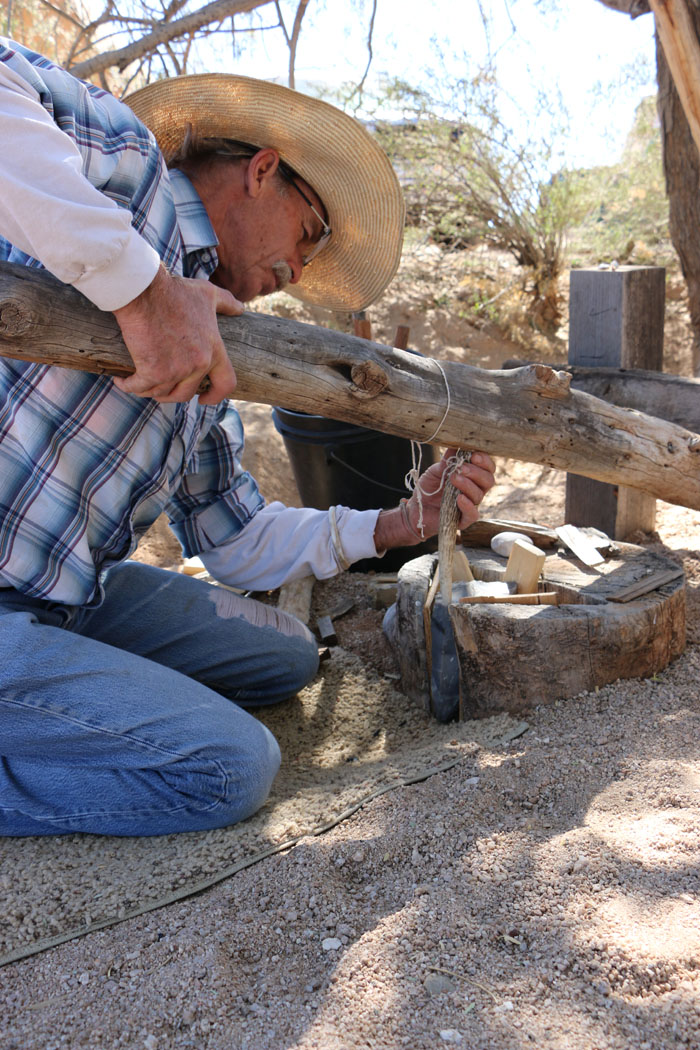
Nunn has set up a demonstration which amazes all those who gather around. It’s a technique for knapping flint, which involves using a long crude wooden lever anchored to a stump. The flint core is positioned and secured using another stump and several wedges. The process to secure and adjust the core takes about 20 minutes. Once secure, Nunn carefully positions a piece of elk antler precisely on a prepared platform where it won’t slip. Then Nunn pushes down on the lever and listens and feels, makes minute adjustments. He pushes the lever again until the flint shard snaps off, and voila! it’s a perfect little dagger around 9-inches long. “This is a technology that I’ve refined and developed since the 80’s,” he says. “There is just one other man in France I know of who is doing something similar. But I’ve simplified the technique.”
While Nunn has made his living as a flintknapper for 35 years, he says that his body couldn’t take all of the time working with the rock. “In Neolithic times, a flintknapper wouldn’t live much longer than 40 years, so I’ve lived much longer than they have, and a few years ago I could feel my back and body giving out.” He added, “The old-timers who were my mentors, who kept it up, would develop pneumonia.” The minute explosions of rock make a powder which one can’t avoid inhaling.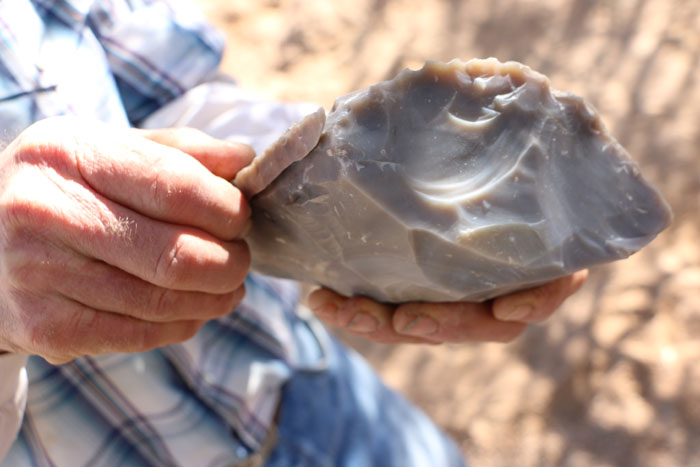
Since Nunn semi-retired from flintknapping a few years ago, he started a new business making beef jerky and growing carrots on his Castle Valley property. He shares a carrot with me to eat on my trip home. It’s sweet and delicious, and his jerky is as labeled Nunn Better—with a nun riding a bull on the label.
Nunn’s beef jerky and carrots are available in Moab at the MoonFlower Co-op grocery store.

